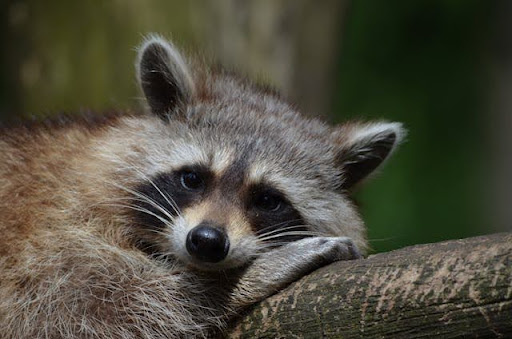Raccoons may look cute with their masked faces and ringed tails, but when they invade your property, they can quickly become a nuisance, warns property management San Jose CA company, Fireside Property Management. Known for their intelligence and dexterity, raccoons are skilled at finding ways into attics, basements, garages, and even chimneys.
Once inside, they can cause significant damage by tearing insulation, chewing wires, contaminating surfaces with droppings, and creating a noisy disturbance at night. For homeowners, learning effective raccoon removal strategies is essential to protect property, maintain hygiene, and prevent recurring infestations.
This guide will walk you through practical tips for safe and humane raccoon removal, signs of infestation, preventive measures, and when it’s time to call professionals. By the end, you’ll have a clearer understanding of how to deal with these unwelcome guests.
Why Raccoons Pose a Problem
Before diving into removal tips, it’s important to understand why raccoons are considered pests when they move too close to human homes:
- Property Damage – Raccoons can rip apart shingles, soffits, and vents while trying to enter your attic. Inside, they shred insulation and leave behind strong odors.
- Health Risks – Their droppings can carry roundworm and other parasites, posing risks to pets and humans. They can also spread diseases like rabies.
- Noise Disturbance – Raccoons are nocturnal, meaning you’ll hear scratching, thumping, and scurrying at night, disrupting sleep.
- Pet Conflicts – They may raid pet food bowls left outdoors and even fight with smaller animals.
For these reasons, homeowners must act quickly at the first signs of a raccoon problem.
Signs You Have a Raccoon Problem
Detecting raccoons early helps minimize damage and makes removal easier. Watch for these signs:
- Noises at Night: Thumping, scratching, or growling sounds from the attic or walls.
- Damaged Entry Points: Torn roof vents, soffits, or broken screens.
- Tracks and Droppings: Raccoon tracks are distinctive with five toes resembling small human hands. Droppings may appear in concentrated areas.
- Pet Food Missing: Outdoor bowls often attract raccoons at night.
- Foul Odors: Urine and feces can produce strong, unpleasant smells in enclosed spaces.
If you notice any of these signs, it’s time to implement raccoon removal strategies.
Effective Raccoon Removal Tips for Homeowners
1. Identify and Seal Entry Points
Raccoons often enter through gaps in roofs, chimneys, or crawl spaces. Inspect your home carefully to find how they are getting inside. Seal off any potential entry points with strong materials such as metal flashing, hardware cloth, or heavy-duty mesh. Make sure to do this after ensuring no raccoons are currently inside, otherwise you may trap them.
2. Remove Food Sources
Raccoons are opportunistic feeders. If you leave pet food outside, keep garbage cans uncovered, or allow bird feeders to spill seeds, you are practically inviting them.
To discourage raccoons:
- Use raccoon-proof trash cans with tight lids.
- Bring pet food indoors at night.
- Secure compost piles.
3. Use Light and Noise Deterrents
Raccoons prefer dark, quiet places. Installing motion-activated lights or playing a radio in the attic can make the environment uncomfortable for them. Ultrasonic repellents are also available, though effectiveness can vary.
4. Natural Repellents
Certain smells deter raccoons. Spraying areas with ammonia, vinegar, or predator urine can discourage them from nesting. However, these need frequent reapplication and may not be a permanent solution.
5. Humane Trapping
Live traps can be used to catch raccoons, but they require care. Bait the trap with marshmallows, fruits, or peanut butter. Once caught, you must release the raccoon far from your property, but laws vary depending on your location. Some states prohibit relocating wildlife without permits, so check regulations first.
6. Protect the Chimney and Roof
Chimneys are common nesting spots for raccoons. Install chimney caps and cover vents with heavy-duty mesh. Trim tree branches near the roof to prevent raccoons from climbing onto your home.
7. Clean and Sanitize
After removal, thoroughly clean the area where raccoons nested. Wear gloves and a mask to avoid exposure to parasites or bacteria. Replace contaminated insulation and disinfect surfaces. This not only restores cleanliness but also removes scents that might attract future raccoons.
Preventing Future Infestations
Once you’ve managed to get raccoons out, prevention becomes key. Here’s how you can keep them away for good:
- Regular Inspections – Periodically check attics, basements, and crawl spaces for signs of damage or intrusions.
- Secure Garbage – Always use bins with tight lids and keep them in a locked area if possible.
- Yard Maintenance – Remove fallen fruits, keep grass trimmed, and reduce clutter that can provide hiding spots.
- Install Fencing – Electric or tall fences can help deter raccoons from entering gardens.
- Pet Food & Bird Feeders – Bring food inside at night and use raccoon-proof bird feeders.
DIY vs. Professional Raccoon Removal
Many homeowners start with DIY approaches, such as repellents and securing garbage. While this can sometimes solve minor issues, raccoons are clever and persistent. If you’re dealing with multiple raccoons, or if they’ve been inside your attic for a while, professional help may be necessary.
Professional wildlife removal services offer:
- Safe and humane trapping.
- Proper relocation within legal boundaries.
- Repair and exclusion services to prevent re-entry.
- Expertise in cleaning and sanitizing contaminated areas.
While DIY can be cost-effective, professionals ensure the job is done thoroughly and safely, especially when dealing with aggressive raccoons or mothers with babies.
Safety Precautions to Keep in Mind
- Avoid Direct Contact: Raccoons can bite or scratch when threatened.
- Protective Gear: Wear gloves, masks, and long sleeves when cleaning raccoon-infested areas.
- Check Local Laws: Wildlife removal and relocation rules vary by state.
- Children & Pets: Keep them away from areas where raccoons were nesting until thoroughly cleaned.
Conclusion
Raccoons may be fascinating creatures in the wild, but when they invade your home, they bring destruction, noise, and health risks. The key to effective raccoon removal lies in a combination of immediate action and long-term prevention. Identifying entry points, removing food sources, using deterrents, and cleaning thoroughly are all important steps. For stubborn cases, hiring professionals ensures a safe and lasting solution.
As a homeowner, being proactive is the best defense. With the right strategies, you can protect your property and enjoy peace of mind knowing your home is raccoon-free. If you want to know about raccoon removal in greater detail, remember that prevention, safety, and humane practices should always be at the core of your efforts.









